
Hotel Santa Maria Ad Nives tomlivor
Santa Maria Maggiore è una delle quattro Basiliche papali romane ed è la sola ad aver conservato le strutture paleocristiane. Il suo campanile in stile romanico rinascimentale, voluto da Gregorio XI al ritorno da Avignone, è il più antico di Roma. Una delle sue cinque campane, "la sperduta", suona ogni sera alle 21 un richiamo per tutti i fedeli.

Miracolo della neve il 5 agosto a Roma com'è nata la Basilica di Santa
The Basilica di Santa Maria Maggiore is a Papal major basilica and the largest Catholic Marian church in Rome. The Basilica reveres the worshiped image of Salus Populi Romani, portraying the Blessed Virgin Mary as the help and protectress of the Roman people, which was granted a Canonical coronation by Pope Gregory XVI on 15 August 1838 accompanied by his Papal bull Cælestis Regina.

Santa Maria nella neve JuzaPhoto
Also known as Santa Maria della Neve, the Church of Santa Maria Maggiore is located in the historic town centre of Sirmione.It houses beautiful frescoes and a wooden statue of the Madonna from the same period as its foundation in the 15th century.. At the front, in the portico, you can see that the northernmost column is a Roman milestone with a dedication to the Emperor Julian the Apostate.

Santa Maria Maggiore della Neve Courtyard Watercolor Sirmione
The Basilica of Santa Maria Maggiore is one of the most important and beautiful churches in Rome. It is the oldest among the great churches of the city and one of the 5 papal basilicas and one of the 7 pilgrim churches of Rome. The building stands on the Esquilin, the highest of the 7 ancient hills of Rome with about 65 meters, only about 300.

Snow in August at Santa Maria Maggiore in Rome An American in Rome
Santa Maria Maggiore ( lateinisch Basilica Sanctae Mariae Maioris, deutsch Groß-Sankt-Marien ), auch Santa Maria della Neve ( Unsere Liebe Frau vom Schnee ), Santa Maria ad praesepe („die hl. Maria an der Krippe") oder Basilica Liberii ist eine der vier Papstbasiliken Roms im Rang einer Basilica maior und eine der sieben Pilgerkirchen.

Miracolo della neve a Santa Maria Maggiore 5 agosto 2023
The Bell Tower is visible to those outside in the square. If you can, climb it! It offers one of the best views over Rome! Huge marble columns are believed to have come from the original church, or even perhaps from another older Roman building; The church faces the Piazza Santa Maria Maggiore; Outside it stands a huge Marian column.The church itself stands at 75 metres high and is 80 metres wide.

Miracolo della neve a Roma il 5 agosto a Santa Maria Maggiore
Here are 15 things you can't miss at Santa Maria Maggiore: 1. Two Facades. While the church interior is classical, the church's loggia facade, on the Piazza Santa Maria Maggiore, is decidedly Baroque or even Rococo. It was created by Fernando Fuga in 1761. The Loggia of Blessing on the second floor is topped with a sculptural group.
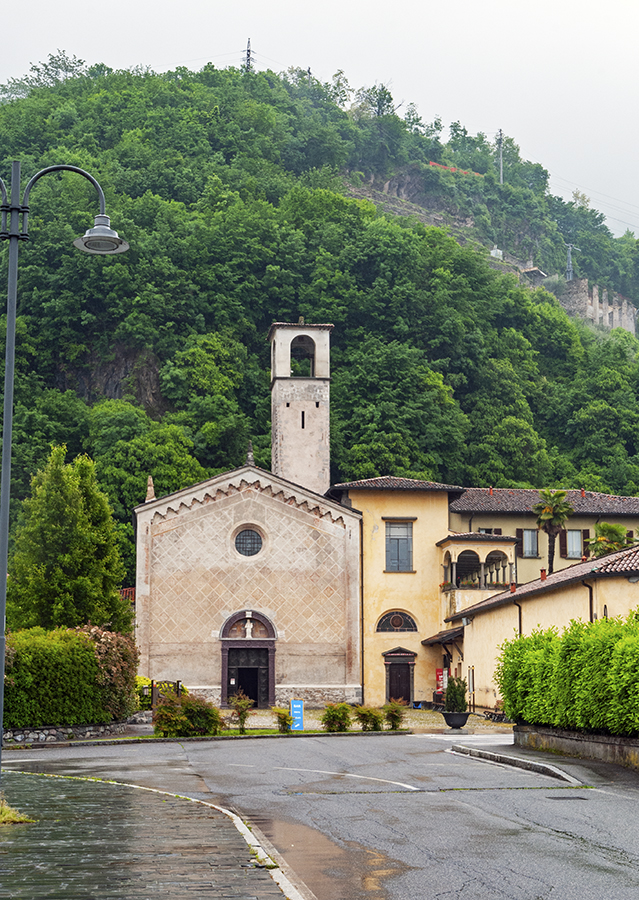
Chiesa di Santa Maria della Neve • Wander Your Way
Welcome to St Mary Major, the spiritual heart of Christianity and Marian devotion, one of the four Papal Basilicas in Rome. Plan your pilgrimage or visit to the most important and oldest Marian Shrine in the West, a shrine that houses the icon of the Salus Populi Romani and the Sacred Cradle of Jesus.
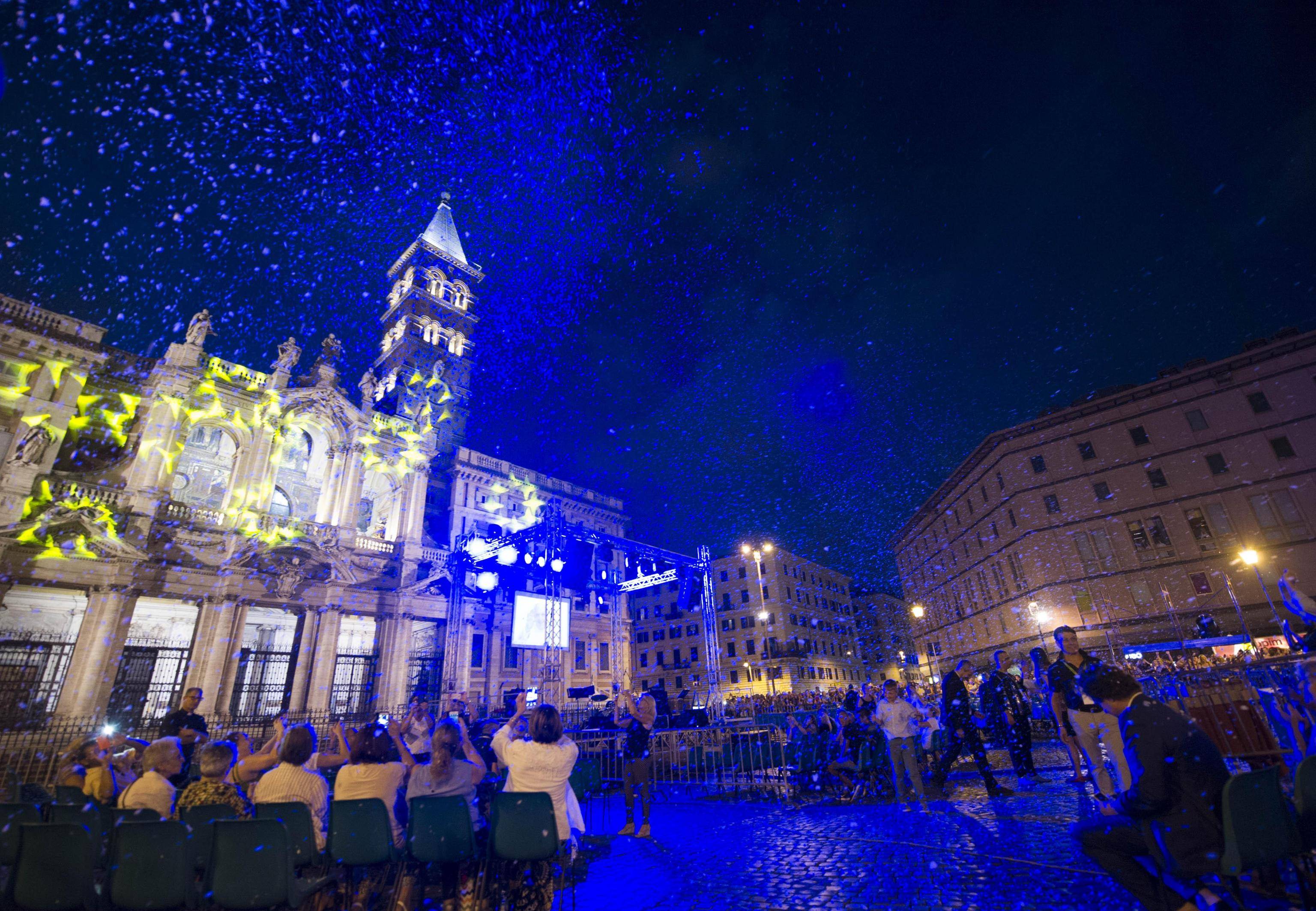
La Madonna della Neve a Santa Maria Maggiore Photogallery Rai News
Santa Maria Maggiore was founded in 432. This was just after the Council of Ephesus of 431 which decreed that the Virgin Mary was the mother of God. The basilica is the oldest and largest of 26 churches in Rome dedicated to the Virgin Mary (hence the name,Maggiore, orMajor/Most.)
5 agosto Dedicazione basilica S. Maria Maggiore Madonna della neve
Thu 27 Jul 2023. Every year on August 5th, right at the height of the fierce Italian summer, Romans descend on the ancient basilica of Santa Maria Maggiore to celebrate one of the city's strangest miracles. The subject of the festivities is La Madonna Della Neve, or the Madonna of the Snows, and features the recreation of a miraculous summer.
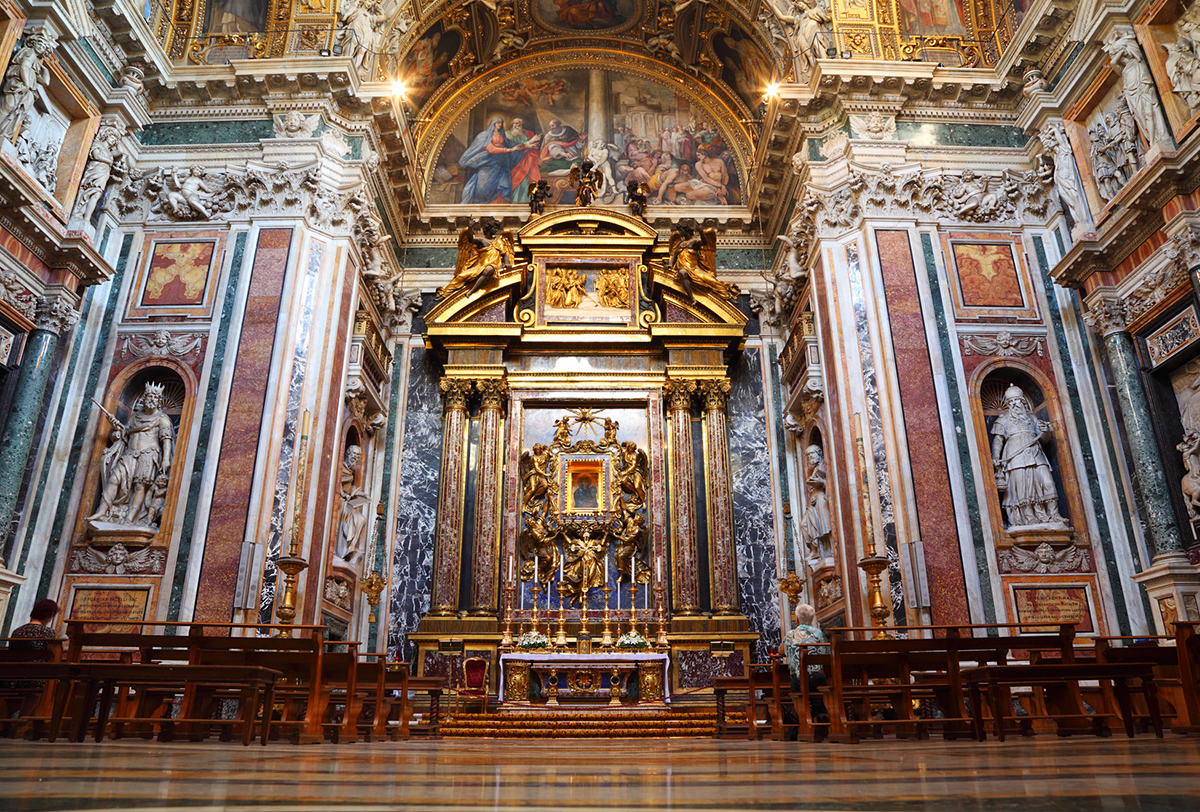
Basilica di Santa Maria Maggiore Rome Igreja
It was found at sea, near the Rovigliano rock, by fishermen between the 14th and 15th centuries, and was given the name of Santa Maria ad Nives, because the discovery had taken place on August 5.

Santa Maria Maggiore della Neve Watercolor of Sirmione, Italy
Santa Maria Maggiore is often referred to as Santa Maria della Neve (St Mary of the Snow), on account of a curious story relating to its origin. According to legend, in 358, a Roman couple, who were childless, decided to leave their worldly goods to the Virgin Mary. The couple were visited in their sleep by the Virgin Mary, who told them to.
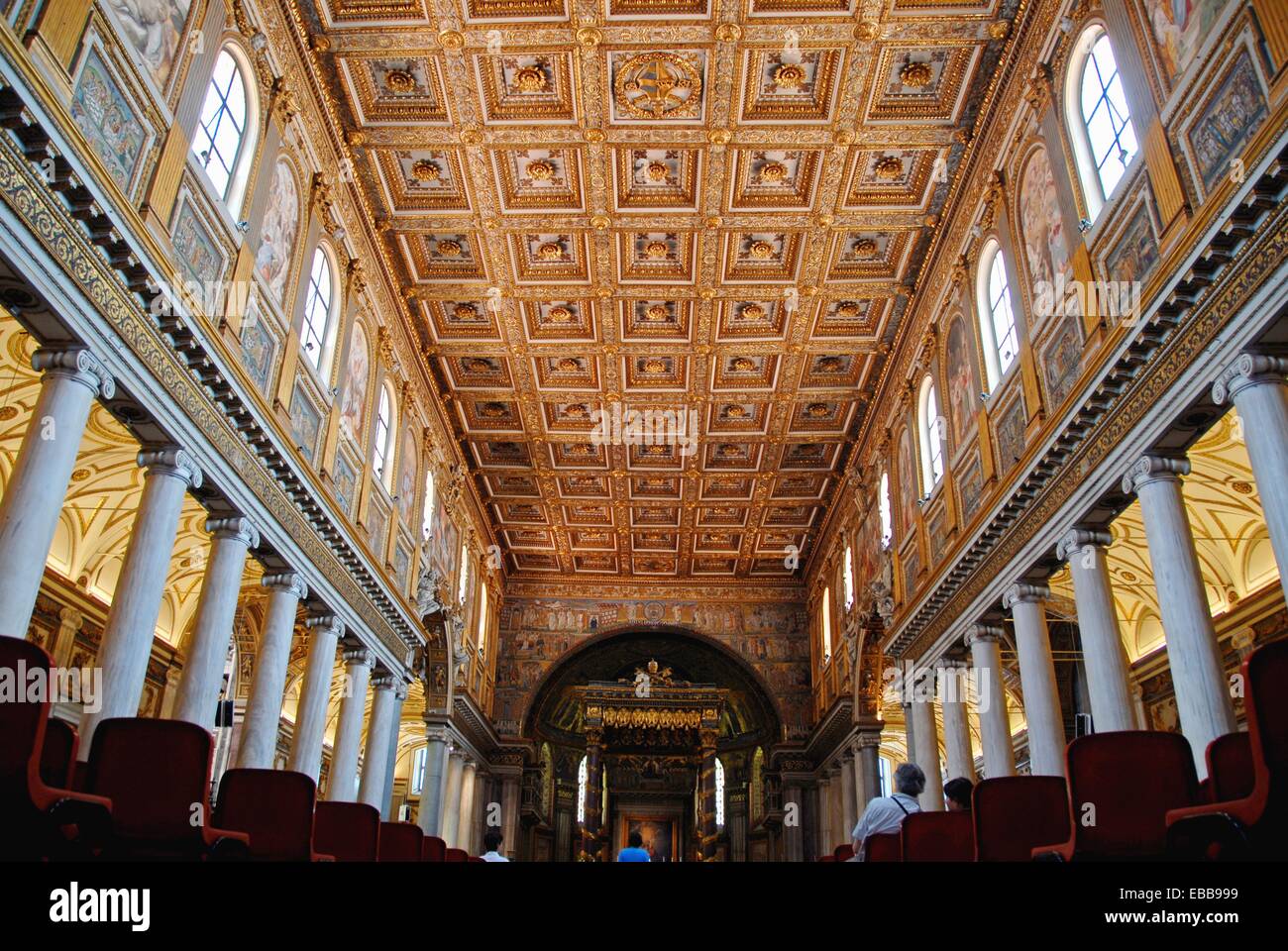
Interior of Santa Maria Maggiore, also known as Santa Maria Della Neve
The Miracle of the Snow at Santa Maria Maggiore Cultural events 7 August 2015 by Milestone Rome On the 5th of August piazza di Santa Maria Maggiore was whitened by an evocative snowfall to celebrate the Miracle of the Snow (Miracolo della Neve) as every year since 1983.

Snow in August at Santa Maria Maggiore in Rome An American in Rome
Rome - Basilica, Papal Palace, Renaissance: Located on the Esquiline Hill, Santa Maria Maggiore was founded in 432, just after the Council of Ephesus in 431, which upheld the belief that Mary truly was the mother of God; it was thus the first great church of Mary in Rome. Behind its Neoclassic facade (1741-43), the original basilica has resisted change. Most of the mosaics, lining the walls.

Santa Maria Maggiore la Basilica della neve all’Esquilino
Cultura Neve d'agosto a Roma: il "miracolo" si ripete a Santa Maria Maggiore Nella serata del 5 agosto, la 40esima edizione della rievocazione. Cosa narra l'antica leggenda Redazione 01.
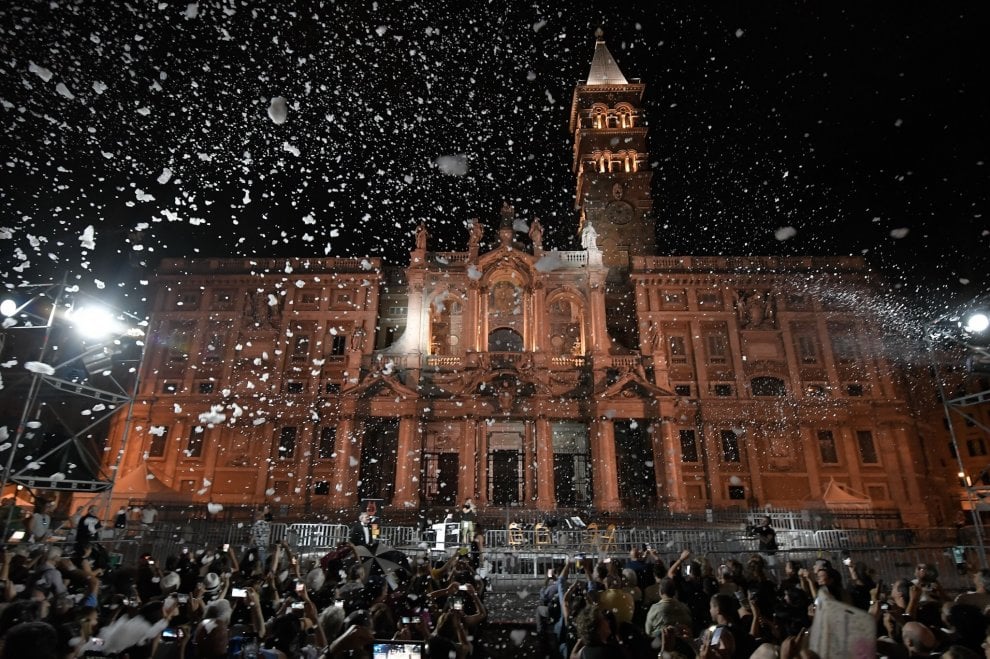
A Roma torna il miracolo della neve il 5 agosto a Santa Maria Maggiore
Santa Maria Maggiore is a stunning basilica with many architectural and artistic treasures to discover, and not to mention you can enter for free. The most impressive feature of the church is its impressive mosaics, which cover the apse, the triumphal arch, and the nave. These mosaics date back to the 5th century and are considered some of Rome.